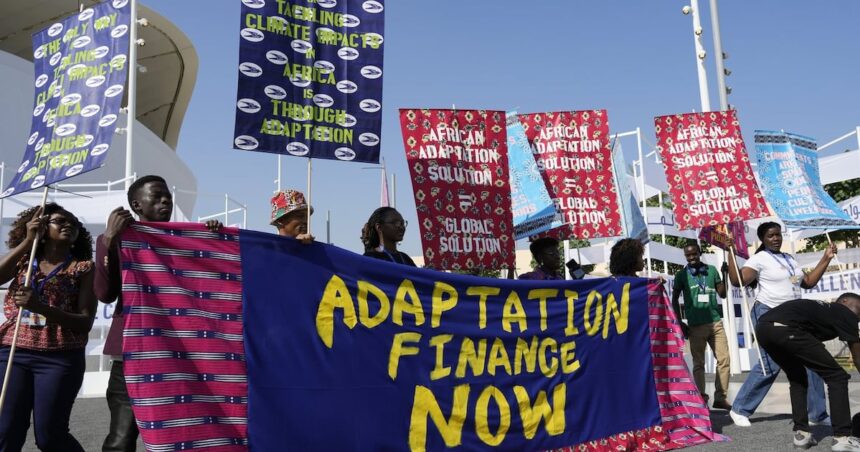As floodwaters swept through Abbotsford’s agricultural heartland in 2021, destroying crops and displacing thousands, Vancouver-based logistics firm Horizon Supply Chain Solutions watched its regional operations grind to a halt. Three years later, the company has invested over $4.2 million in climate-resilient infrastructure—part of a growing trend as Canadian businesses confront the harsh financial reality of climate change.
“We simply couldn’t afford another shutdown,” explains Horizon CEO Miranda Chen. “The adaptation investments we’ve made aren’t optional anymore—they’re essential operating costs in today’s climate reality.”
A comprehensive report released yesterday by the Canadian Climate Institute reveals that Canadian businesses are increasingly allocating substantial portions of their annual budgets to climate adaptation measures. The analysis of 500 mid to large-sized companies shows average climate adaptation spending jumped 37% since 2021, with projections indicating further increases through 2026.
The financial services sector leads this trend, with major banks and insurance companies allocating an average of 5.3% of their annual capital expenditure to climate-proofing operations. TD Bank recently announced a $1.2 billion five-year climate resilience program, while Manulife has integrated climate risk assessment into all commercial property evaluations.
“Financial institutions are moving from theoretical risk models to practical spending decisions,” says Dr. Amara Singh, lead author of the report. “They’re pricing climate risk into their operations because they’re dealing with the costs in real-time.”
The energy sector follows closely behind in adaptation spending. Enbridge has committed $900 million to harden infrastructure against extreme weather events, while smaller energy companies report allocating between 3-4% of annual budgets to similar measures.
For small and medium enterprises, adaptation spending remains more challenging but increasingly necessary. The report found that 62% of SMEs have made at least one significant operational change due to climate concerns in the past two years—from relocating facilities away from flood plains to investing in backup power systems.
The shift toward adaptation spending represents a significant change in corporate climate strategy. While emissions reduction remains important, companies are increasingly focused on protecting their bottom line from climate impacts already being felt.
“Five years ago, corporate climate discussions centered almost exclusively on mitigation—reducing emissions,” explains climate economist Dr. Laurent Bernier from the University of British Columbia. “Today, Canadian businesses are having more nuanced conversations about managing immediate climate threats to their operations.”
This spending trend coincides with research from the CO24 Business department showing escalating climate-related insurance claims across Canada. In 2023, insurance payouts for extreme weather events topped $3.1 billion—the third highest year on record—according to the Insurance Bureau of Canada.
Federal adaptation funding has stimulated some of this corporate spending. The National Adaptation Strategy launched in 2022 allocated $1.6 billion toward infrastructure resilience, with public-private partnerships accounting for approximately 40% of funded projects.
However, the report identifies significant regional disparities in adaptation investment. British Columbia and Quebec lead in corporate adaptation spending, while Alberta and Saskatchewan companies lag despite facing severe climate risks.
“The Atlantic provinces show concerning gaps in private sector adaptation,” Singh notes. “Despite facing among the highest per-capita climate risks in Canada, business adaptation spending there is roughly half the national average.”
For investors, corporate adaptation strategies are becoming a crucial evaluation metric. The Toronto Stock Exchange now includes climate risk disclosure recommendations, while major institutional investors like the Canada Pension Plan Investment Board have begun incorporating adaptation planning into investment decisions.
As reported in CO24 Breaking News last month, climate adaptation has become a defining issue in Canadian business planning, with many companies now conducting specialized climate vulnerability assessments to identify critical areas for infrastructure investment.
The latest development in this trend is the emergence of specialized adaptation financing products. RBC has launched a climate resilience financing program offering preferential rates for businesses investing in climate-proofing measures, while several regional credit unions have created similar programs tailored to small businesses.
As climate impacts intensify, adaptation spending is expected to become a standard business expense rather than a specialized environmental initiative. With Canadian businesses already spending an estimated $12.7 billion annually on adaptation measures, the report projects this figure could double by 2030 as climate impacts accelerate.
“We’re entering an era where climate adaptation isn’t just about environmental responsibility—it’s about business survival,” Chen concludes. “Companies that fail to adapt won’t just face higher costs; they risk becoming fundamentally uncompetitive.”











